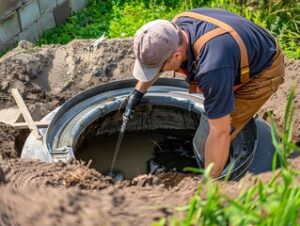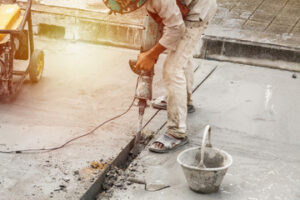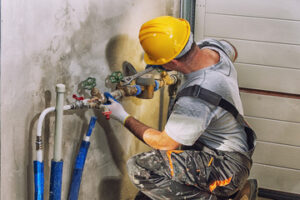The right kind of trimming can help ensure the health and beauty of your trees, but the wrong cuts can cause serious damage.
Topping (cutting main branches to stubs) is a bad idea, as it disrupts the tree’s natural structure and causes weak new growth that can break easily. Contact Tree Trimming Irvine CA now!

Whether embracing the art of topiary or cultivating a natural form, aesthetic tree trimming elevates landscapes and enhances personal well-beingwell-being. It draws attention to striking features such as textured bark or vibrant foliage while highlighting a structure’s symmetry and balance.
Different species of trees have distinct growth patterns, and pruning should complement rather than clash with those characteristics. When trimmed properly, trees display a graceful, sculptural shape that blends with their surroundings. Using strategic trimming to draw the eye to a garden’s architectural features or water elements establishes visual focal points and creates a cohesive visual narrative.
The practice of shaping trees dates back thousands of years. In ancient Egypt and Rome, topiary was used to craft geometric and ornamental forms that symbolized man’s control over nature. Later, niwaki and bonsai techniques were used in Japan to sculpt slender, graceful forms that highlighted the beauty of the tree while providing vitality to the garden. Today, formal topiary continues to be used in modern gardens and public spaces, while a variety of other decorative forms can be cultivated through regular tree pruning.
In addition to establishing balance, aesthetically pleasing pruning should be done at the right time of year. Trimming during the dormant season promotes better healing and reduces the risk of disease transmission. Moreover, pruning at the proper time of year allows the tree to develop a strong foundation for its new growth.
Aesthetically, there are three primary methods of pruning: cleaning, thinning, and raising. Cleaning involves removing dead or diseased branches to maintain health, while thinning removes excess branches for improved density and light penetration. Raising involves removing low-hanging branches that can interfere with pedestrians or vehicles. These pruning practices ensure that trees remain safe and accessible throughout the year.
Ornamental tree trimming also promotes a more tranquil environment by reducing the noise of wind and rain against the foliage, fostering a sense of peaceful repose. This enhanced ambiance inspires leisure activities such as picnicking under the shade of a trimmed tree or yoga sessions surrounded by rustling leaves and fragrant blooms. Ultimately, the aesthetic harmony produced through aesthetic tree trimming increases landscape value while elevating personal well-beingwell-being and promoting societal well-beingwell-being.
Health
Many people think of tree trimming as an aesthetic service, such as removing dead or diseased branches and improving a landscape’s overall look. However, the benefits of keeping up with regular pruning extend beyond aesthetics and into health and safety.
Well-pruned trees promote healthy growth, reduce water and air pollution, aid in weather regulation and create cooler environments on your property. Aside from these environmental advantages, regularly trimming your trees enhances beauty and increases the value of your home. A reputable professional will know how to identify and trim the right branches to promote healthy growth without compromising the natural integrity of your trees.
Trees that aren’t trimmed on a routine basis can become overgrown and tangled, posing a threat to nearby pedestrians and vehicles. In addition, weakened or dead branches are more susceptible to breakage during severe weather conditions. Professionals can remove broken limbs to help protect against accidents and property damage.
Removing dead or diseased limbs prevents the spread of infections within the tree, protecting it from further harm. It also helps maintain the structure of the tree, reducing its risk of failure and improving its ability to withstand storms.
Keeping up with regular trimmings ensures the correct balance between branch density and the size of the canopy, promoting air circulation, sunlight penetration and overall tree health. The resulting structure is more visually appealing, with the perfect shape and proportions that contribute to your landscape’s design.
There are several different types of cuts that can be performed depending on your specific goals. Heading cuts reduce height by cutting the ends of lateral branches back to buds, which can then spur new growth. This technique is commonly used in young trees to stimulate fast growth. However, it’s important to avoid over-heading or balancing the crown with this method, as it can weaken a tree and make it more susceptible to wind damage.
Thinning cuts, on the other hand, remove a significant amount of lateral growth to increase light transmission and air flow through the canopy. This technique also helps control the size of a tree, preventing it from encroaching on power lines or growing too close to buildings.
Safety
Trimming and pruning can be a dangerous job when proper safety protocols aren’t followed. Workers can be injured by falling branches, getting caught in slippery surfaces, working near electrical wires, or handling heavy branches. Fortunately, there are several ways to prevent these types of accidents from occurring.
The first step is to prepare yourself with the right equipment and knowledge of safety procedures. Proper clothing is also essential to protecting yourself from injuries. A hard hat will protect your head from falling limbs and a face shield will help deflect debris, while gloves can save you from cuts, scrapes, and contact with poisonous plants like poison oak or poison ivy. Sturdy boots will help you keep a firm grip on the ground and reduce your chances of slipping or falling while trimming or pruning.
Prior to starting any work, it’s important to perform a thorough inspection of your tools and equipment. This will include ensuring that all climbing lines and equipment are in good condition with no frayed or loose parts. It’s also a great idea to mark the area around the tree where you will be working to inform pedestrians and drivers that there is construction underway.
Keeping your trees healthy through regular trimming is a crucial part of property maintenance. It prevents overgrowth that can lead to damage and it promotes a balanced crown, making the tree more visually appealing. In addition, trimming helps to control the spread of disease by removing infected branches before they can spread to other areas of the plant.
Another benefit of regular pruning is preventing power outages from downed or damaged branches. This is particularly important for homeowners with trees that come into proximity with utility lines. If a tree is allowed to grow over a power line, it can cause serious damage in the event of a storm or during a windy day. Regular pruning can prevent this from happening by removing branches that are growing too close to the lines.
Professional tree trimmers are trained to use all the necessary tools and equipment safely. They also have extensive experience in the field and can offer valuable insight into the best practices for your specific situation. They will be able to advise you on the best techniques for preserving and caring for your trees.
Maintenance
Trees are a beautiful part of any landscape, and they enhance the overall look of your property. However, they require a bit of maintenance to keep them looking their best. Regular trimming and pruning can help to improve the appearance of your property and also prevent health problems with your trees.
Keeping your trees properly trimmed is important for both the health of the tree and your own safety. Overgrown branches can fall during storms and cause damage to your home or vehicles. They can also obstruct your view and pose a risk to people walking through your yard. Regular trimming can prevent these hazards and make your property safer for both residents and visitors.
The most common reasons for trimming a tree include improving the appearance of the yard, increasing air circulation, and promoting plant growth. During a trimming service, a professional can remove dead or diseased branches, as well as shape the tree into its desired form.
Thinning is the most common type of pruning that can be done to any tree. It reduces the density of a tree’s crown, which increases light penetration and air circulation. It can also remove crowded or competing limbs to encourage more even growth. This type of pruning is a great option for increasing flowering and fruit production, as it can increase the amount of sunlight that reaches these areas.
It is important to remember that tree trimming can be a dangerous task, particularly if you are not a trained professional. Many tree trimming services will hire experienced and qualified personnel to perform these services. It is important to hire a company that is licensed, insured, and certified to ensure that the job is done safely and correctly. The company will check for stability, trunk condition, and limb health before starting the work. They will also avoid climbing large or tall trees and never prune a tree within 10 feet of power lines to minimize the risk of electrocution. It is also important to avoid working in windy, wet, or icy conditions as this can further stress the tree and lead to additional damages.








